The Orange plant (Citrus x sinensis) belongs to the Rutaceae family. Orange trees are now grown worldwide for their delicious and nutritious fruit and can be grown indoors or in a greenhouse, if you do not live in a warm climate. The Orange tree is an evergreen citrus tree with a productive age of 50-60. Also, some well-cared Orange trees can live up to 100 years or more. Below are the top top 19 steps/ways to boost Orange yield.
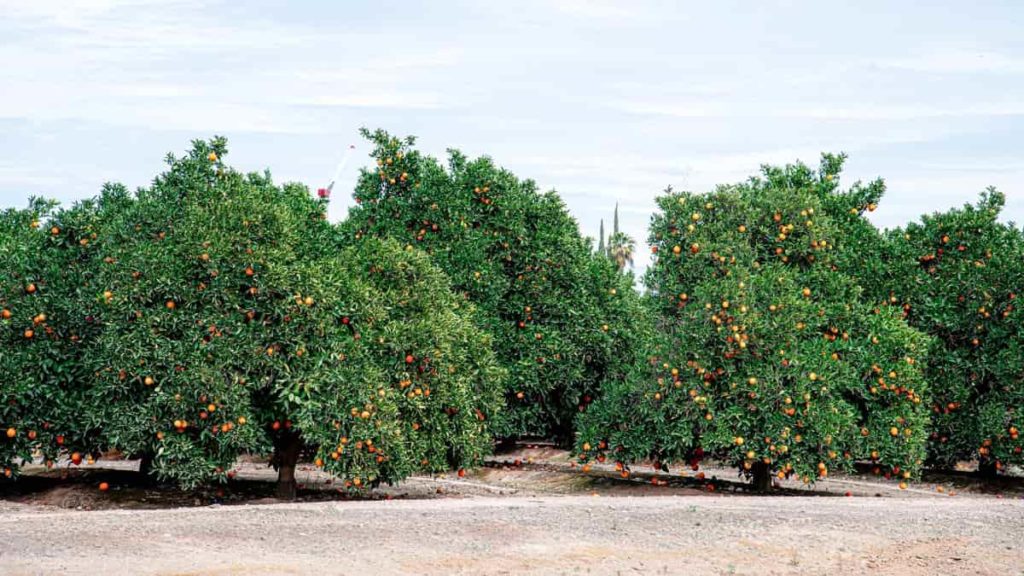
Top 19 steps/ways to boost Orange yield
Step 1: Select high-yield Orange varieties
The most important commercial varieties of Orange in India are Mandarin (Citrus reticulata), Sweet Orange (Citrus sinensis), and Acidic Lime (Citrus and Antifolia), which account for 41, 23, and 23% of all citrus produced in the country, respectively. The varieties of mandarin Orange are Nagpur Orange, Korg Orange, Khasi Orange, Midkhed, Srinagar, Batwal, Denise, Kara (Abuhar), SZ-IN-COM, Darjeeling Mandarin, Sumithra mandarin, Seedless-182, and Kinnow Mandarin.
Step 2: Soil and climate requirements for getting high yield
Deep, well-drained fox soil is ideal for cultivating sweet Oranges. Heavy soils, if well-drained, give good yields, but cultivation becomes difficult. Soil pH should be 6.5 to 7.5, and water EC should be less than 1.0. The plant is very sensitive to waterlogged soil. A dry climate with about 50-75 cm rainfall from June to September and summer and winter are best.
Oranges can also be grown up to 900 meters above sea level. Extreme temperatures are essential for high yields. Temperature 25°C is ideal and extremely cold, and high temperatures are fixed. To achieve a good fruit yield, it is necessary to maintain the temperature during its growth.
Step 3: Propagation, planting, and spacing to achieve good yield
In general, Orange trees are propagated by seeds and vegetatively by T-budding. However, buds are the best planting material for faster growth and higher yields. When it comes to planting, dig a pit of 75 cm x 75 cm x 75 cm at a distance of 7 m x 7 m and fill it with topsoil and 10 kg of well-decomposed farmyard manure (FYM).
Give Budded plants should be placed in the middle of the pits and placed at stake. Generally, the interval depends on the cultivation, soil type, and method. For higher-density plants, the distance will be shorter. Generally, 120 plants per 1 acre are considered for closed spacing.
Step 4: Micronutrients for plant growth
In large quantities, micronutrients such as zinc, copper, manganese, iron, boron, and molybdenum are required. An improper supply of nutrients can cause serious damage that can lead to the demise of the entire garden. Micronutrients should be provided by foliar spray.
At the beginning of the fruiting period, fertilize the Orange trees with fruit-specific or phosphorus and potassium fertilizers to encourage better fruit set and ripening. Orange trees need extra resources to bear fruit and will plant large, sweet fruits if the right nutrition is available.
In case you missed it: Orange Farming Project Report, Cost and Profit
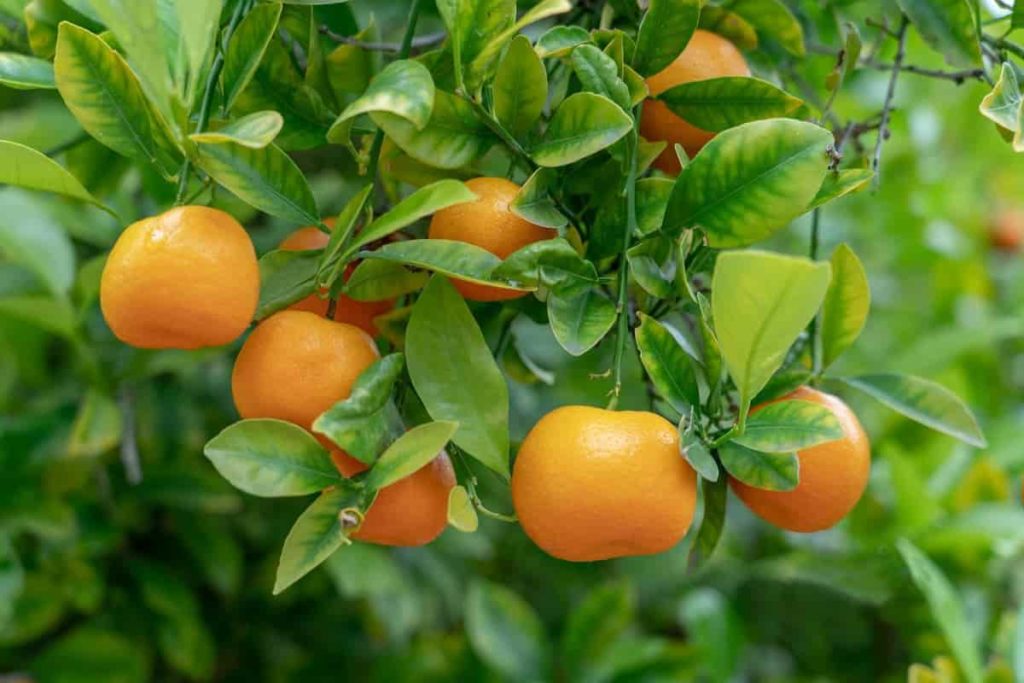
Step 5: Irrigation for getting large, sweet Orange fruits
Irrigation is provided at intervals of 10-15 days in winter months, while it is provided at intervals of 5-7 days in summer months. Irrigation is an essential step in the cultivation of Oranges that require more water than other fruit crops due to their frequent growth and development.
Irrigation depends on soil type, climatic conditions, and plant age. Orange plants are sensitive to water stagnation. Therefore, water accumulation in the tree’s trunk should be avoided. Irrigate the Orange orchard after grafting. An overgrown Orange tree needs about 20-25 irrigations yearly, with approximately 1,400 mm of water. Due to repeated growth and development, Orange trees generally require more water than other subtropical fruits.
Step 6: Drip irrigation for fruit growth and development
Drip irrigation enables water to be applied to the plant’s root system as managed water improves plant growth, quality, and crop yield. Water loss is about 60% less than flood irrigation. As water is supplied to the root system, the fertilizers applied to the roots are used very effectively.
It reduces soil erosion and nutrients compared to flood irrigation. Ground leveling is minimal, so labor is needed. Drip irrigation helps to reduce plant pests and diseases. Crops can be grown at any time by drip irrigation.
Step 7: Training and pruning for better quality fruits
Trees are trained as a trunk with 4-6 well-placed branches to form a basic framework for better quality fruits. The lower branches cannot grow below 50 cm from the soil surface. They are pruning in the early years of planting. Bearing trees require little or no pruning. The main purpose of pruning bearing trees is to maintain the framework and get higher yields from better quality fruits.
Although bearing trees vary in variety, it consists mainly of removing dead, diseased, cross-crossed, and weak branches. Non-bearing trees can be pruned at any time of the year, but the best time for bearing trees to be pruned is after winter or early spring when they are somewhat inactive. Root pruning is also done in central and southern India to manage the flowering season.
Training and pruning are essential and affect fruit quality and crop yield. The trees are trained in the same system, and branches coming out of the lower part of the bud union should be cut regularly. Remove all shoots ready at an early stage at an initial distance of 50-60 cm from the ground to allow strong stem growth. The branches should be well distributed on all sides.
In case you missed it: Orange Farming, Planting, Growing, Care, Harvesting
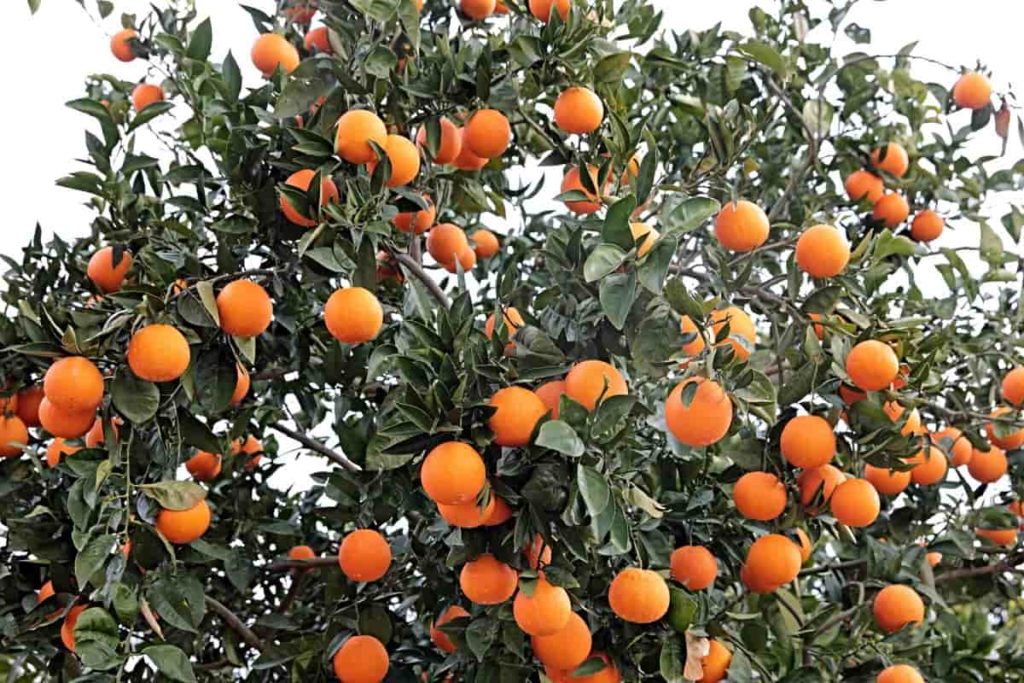
Cross twigs and water suckers should be removed quickly. Bearing trees require little or no pruning. All diseased, injured, bent branches and dead wood should be removed from time to time to start growing Oranges. Plant training should be completed in the first three years so that the plants have a mechanically strong canopy. Pre-existing trees can be cut down at any time to avoid the peak of winter.
Step 8: Control fruit drop and increase your income
Fruit drop in Oranges occurs more or less in three stages: post-setting drop, the size of the pea, and before the harvest. Among these, the last one is the most important and causes great harm to the farmers. It starts immediately after flowering and causes very small fruits to fall off. This shortage is due to the overproduction of natural necessities and is not a major concern for the farmer. Fruit drop reduces the extra fruit load on the tree.
The main cause of physiological fruit drop is;
- Water stress
- High temperatures
- Nutrient deficiencies
- Frost, for an extended period
- Poor health of the tree
Control of fruit drop: Maintain balanced nutrient content in plants so that enough plants can grow to support growing fruit. Prune plants after harvest to minimize the incidence of pests and diseases. Irrigation should be done at critical stages such as flowering, fruit set, and fruit development. Dropped fruits should not be left in the field as they act as disease carriers.
Step 9: Growth regulators for controlling Orange fruit drop
Fruit drop in Mandarin Orange is controlled with the use of two sprays of Growth Regulators – 2,4 D (15 ppm) or GA3 (15 ppm) and Benomyl (1000 ppm) and Urea in the early stages of fruit development. After fruiting at monthly intervals in May and June. The same spray schedule can be followed in September and October to control fruit fall before harvest. The physical process of falling fruit is called abscission.
Physical drop is caused by environmental or physical stress on plants. Immediately after opening, many Orange flowers and fruits fall off due to poor pollination, nutrient deficiencies, or environmental stress. It is common for all types of Orange trees to bear some immature fruit at this time of year. Self-thinning is a natural way to ensure the fruit does not overburden the tree.
The growth of citrus plants requires a good balance of macronutrients and micronutrients to support the growing fruit. Therefore, apply the recommended fertilizers and maintain the healthy and full growth of the trees.
Step 10: Manures for Orange plant growth
Balanced crop nutrition of all-important micronutrients is essential to help build a tree structure that can support the fruit load and ensure that the fruit meets the market and potential. Orange trees respond well to fertilizers and manures, and higher yields are obtained when these nutrients are applied at the right stages.
In case you missed it: A Step-By-Step Guide to High Density Fruit Farming: For Guava, Banana, Mango, Pineapple, Lemon, Papaya, Litchi, and Apple
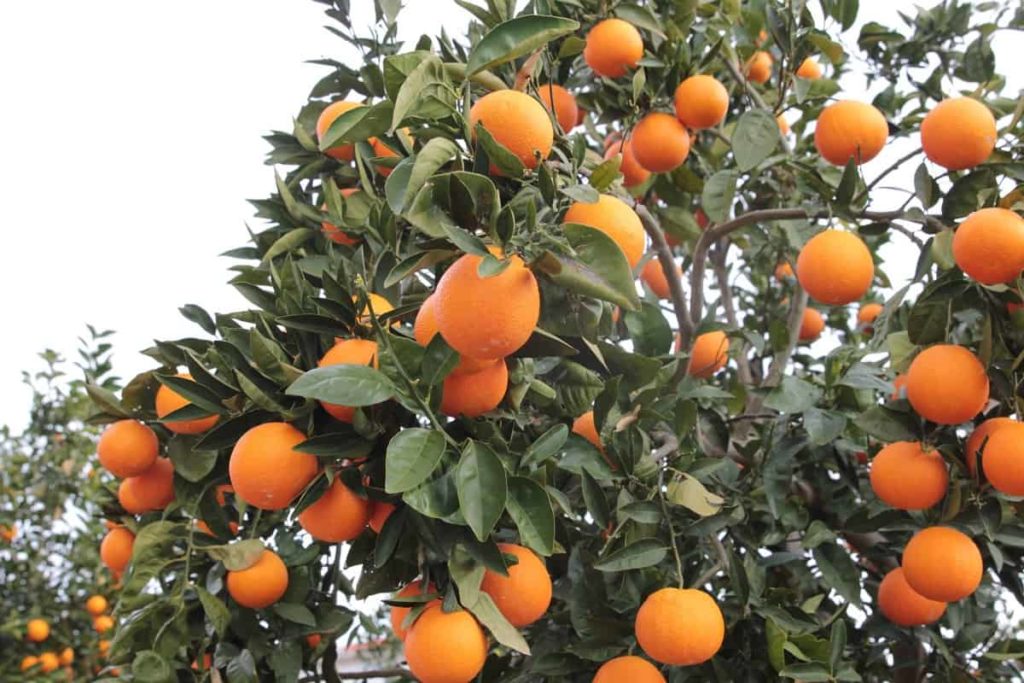
Potassium is a key stimulus to fruit size and requires large amounts of nitrogen during fruit growth and development. Too much nitrogen levels in the late growth stage can limit Orange fruit size. Therefore, it is crucial to use a balanced diet. Phosphorus can also inhibit fruit growth. Iron and zinc supply also positively affect fruit size, increasing crop yields.
Step 11: Intercultural operations for high crop yield
Regular intercultural operations play an important role in high crop yields. As part of this, weeding should be controlled by mulching. Regular plowing between rows of trees to remove weeds. Tree basins should be spread to absorb adequate soil aeration and fertilizer. Chemical weedicides are effective in controlling weeds in Orange trees.
Step 12: Causes for small Oranges
Possible causes of small fruit on Orange trees include nutritional stress, water stress, and insects or infections.
Step 13: Plant protection measures
Due to defective fruit set, plant degradation, fruit fall, and maturation stage, stem tunnel, bark removal, girdling, etc., cause various insect pests like Citrus black fly, citrus psylla, citrus leaf miner, citrus aphids, citrus thrips, bark eating caterpillar, mealy bugs, fruit fly, mites, etc., result in poor performance of the tree in terms of standard fruit production. Spraying with insecticides lies monocrotophos, phosalone, dimethoate, phosphamidon, quinalphos, etc., depending on the type of insect attack; it is effective in most cases.
Lemon butterfly
Feed on leaves and trees; serious in nurseries.
Control – Pick caterpillars and pupae by hand, remove alternate host plants, and Spray 0.04% Monocrotophos or Phosphamidon.
Citrus leaf miner
Caterpillars feed inside leaf tissues, forming zigzag-shining lines on the leaves like galleries. Affected leaves dry out.
Control – To cut and burn the most affected parts during the winter. Spray with semi-cake suspension (300 g in 5 liters of water) or 0.04% phosphamidone or monocryptophos.
Fruit-sucking moth
Puncture the fruit and sucks the juice, causing the fruit to rot and eventually fall off.
Control – Destroy wild plants on which insects breed. Bag individual fruit; 20 grams of melatonin poisoned with 50% WP or 50 ml of dizonon + 200 grams of gar or gar in 2 liters of water.
The major diseases reported are twig blight, gummosis, damping-off, root, and collar rot. Infected plants should be sprayed with Ridomil MZ 72, Bavistin, Benomyl, etc., depending on the type of infection.
Brown rot or gummosis
The bark is invaded and ruptured lengthwise, and large amounts of gums are expelled. The bark is eventually killed.
Control – Apply Bordeaux paint on the option trunk; when planting, wash the pits with a mixture of zinc sulfate, copper sulfate, and lime (5: 1: 4); scrape the affected bark and wash with a zinc-copper-lime mixture.
In case you missed it: Top 15 Steps to Boost Tamarind Fruit Yield: How to Increase Production, Quality, and Size
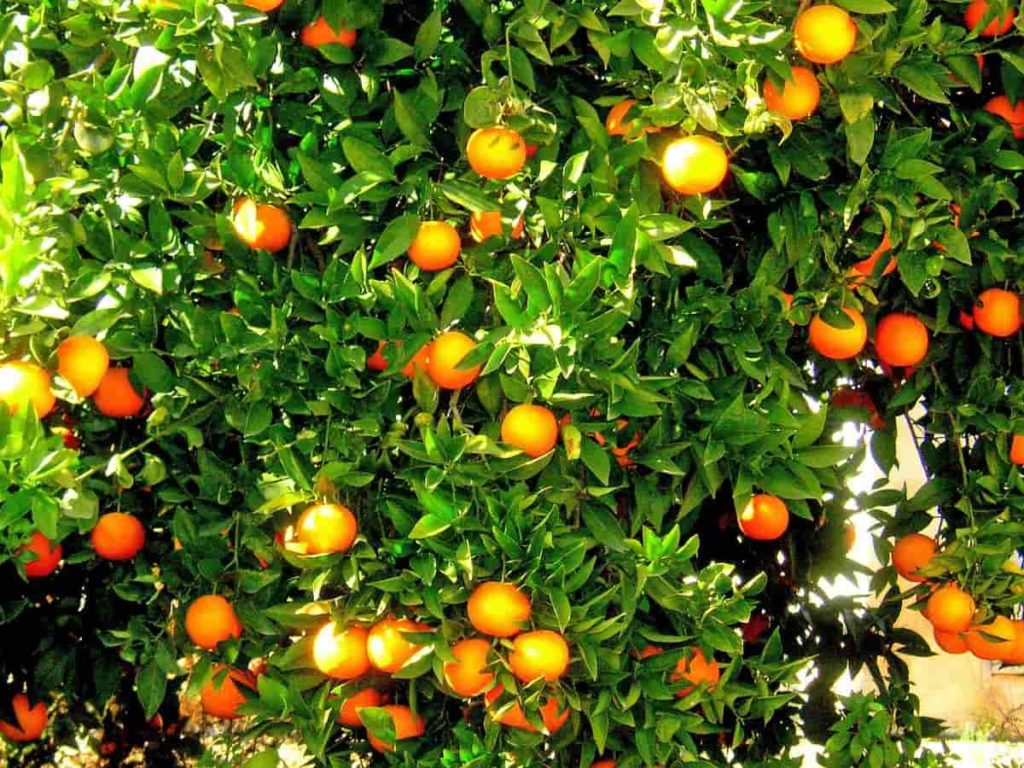
Damping-off
Seedlings rot, fall and die on the surface of the soil.
Control – Adopt Rotation
Fruit fall
Fruits turn yellow prematurely and fall off.
Control – Spray 1-% Bordeaux mixture; apply nitrogen manures.
Step 14: Tips to get sweet Oranges
If your home-grown Oranges are too sour, consider the following tips, and you may help get sweetened Oranges.
- Choose a Sweet Orange tree and allow it to establish itself for a few years before expecting tasty fruit. It is said that old trees will bear good and sweet fruit.
- Oranges are native to tropical and subtropical regions and thrive in these conditions. If you are thinking of growing a sweet Orange tree, make sure it is planted in the sunny part of your property, where it can get maximum sunshine.
- Orange trees grow in clay soils. Heavy clay will not allow strong root systems and lead to substandard fruit production.
- The acid content in the stone is reduced because the fruit stays on the tree in cold temperatures. Leaving the fruit on the tree for a while with the onset of winter allows for sweet fruit. The color of the skin indicates the ripeness of the fruit. The darker the yellow or Orange peel, the riper and sweeter the fruit.
- Oranges need the right amount of nitrogen throughout the growing season to produce sweet fruit. Fertilizer should not be applied until the tree starts to grow. In addition, too much fertilizer can cause leg growth and fruit loss. Once your tree is established, watering should be slow, approximately every two weeks.
Step 15: Increasing the size of citrus fruits
The crop load determines the yield and size of the fruit, and too many fruits can result in small fruits. Growth regulators and careful thinning can reduce the number of fruits per tree to a maximum.
Step 16: Is Epsom Salt Good for Orange trees?
Orange trees are generally keen on nitrogen fertilizers to increase growth and yield but may occasionally suffer from magnesium deficiency in their diet. When this happens, Epsom salts (MgSO4), also called magnesium sulfate, provide the essential micronutrients.
In case you missed it: Top 19 Steps to Boost Plum Yield: How To Increase Fruit Production, Quality, size, and Tips
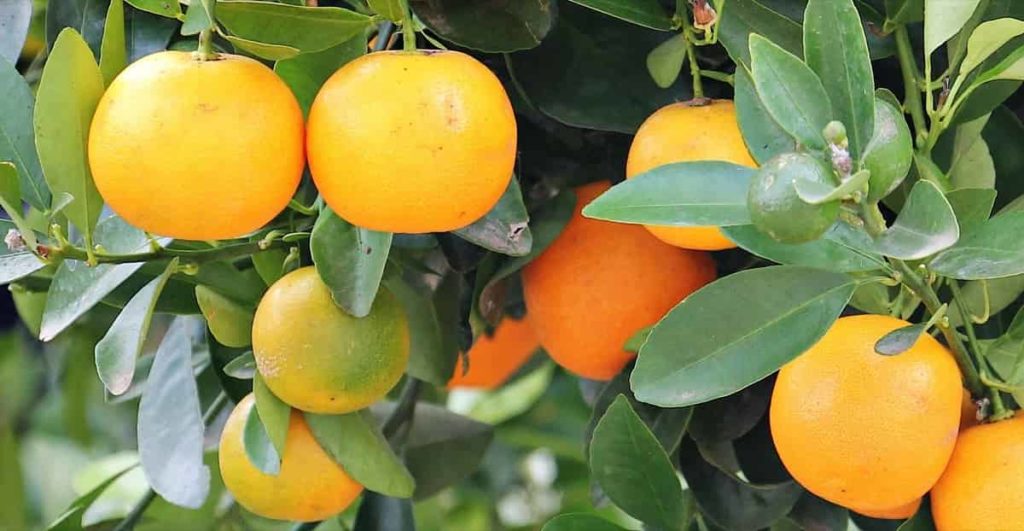
Step 17: When should you prune an Orange tree?
If you decide to prune this Orange tree, plan to do so before flowering or immediately after fruiting. For example, harvest in the spring between February and April in warmer climates. In colder regions, delay harvesting by the end of February or March.
Step 18: Harvesting time for Oranges
The right time to harvest Oranges from a tree is the most important step in Orange farming. Choosing the right harvest season is very important because if you choose the wrong time to harvest this Orange, it will not be able to ripen. What you need to know about Oranges is that they only ripen on the tree, which means you don’t want to pick Oranges before they ripen because once you pick them, they won’t continue to ripen.
Step 19: Orange yield per acre and affecting factors
The production and quality of Orange fruits are affected by many factors, including climatic conditions and production methods. Potassium and nitrogen are the most important nutrients for strong tree growth and productivity. Temperature is an important seasonal factor that affects the quality of Orange fruit. The average yield of Oranges is 4.8 tons per acre.
- Economical Aquaculture: A Guide to Low-Budget Fish Farming
- 15 Common Planting Errors That Can Doom Your Fruit Trees
- How to Make Houseplants Bushy: Effective Tips and Ideas
- Innovative Strategies for Boosting Coconut Pollination and Yield
- Pollination Strategies for Maximum Pumpkin Yield
- The Complete Guide to Chicken Fattening: Strategies for Maximum Growth
- Natural Solutions for Tulip Problems: 100% Effective Remedies for Leaf and Bulb-Related Issues
- Revolutionizing Citrus Preservation: Towards a Healthier, Greener Future
- Natural Solutions for Peony Leaf and Flower Problems: 100% Effective Remedies
- Maximizing Profits with Avocado Contract Farming in India: A Comprehensive Guide
- Natural Solutions for Hydrangea Problems: 100% Effective Remedies for Leaf and Flowers
- The Ultimate Guide to Choosing the Perfect Foliage Friend: Bringing Life Indoors
- From Sunlight to Sustainability: 15 Ways to Use Solar Technology in Agriculture
- The Ultimate Guide to Dong Tao Chicken: Exploring from History to Raising
- The Eco-Friendly Makeover: How to Convert Your Unused Swimming Pool into a Fish Pond
- Mastering the Art of Delaware Chicken Farming: Essentials for Healthy Backyard Flocks
- 20 Best Homemade Fertilizers for Money Plant: DIY Recipes and Application Methods
- How to Craft a Comprehensive Free-Range Chicken Farming Business Plan
- Brighten Your Flock: Raising Easter Egger Chickens for Beauty and Bounty
- How to Optimize Your Poultry Egg Farm Business Plan with These Strategies
- Subsidy for Spirulina Cultivation: How Indian Government Schemes Encouraging Spirulina Farmers
- Ultimate Guide to Raising Dominique Chickens: Breeding, Feeding, Egg-Production, and Care
- Mastering the Art of Raising Jersey Giant Chickens: Care, Feeding, and More
- Ultimate Guide to Raising Legbar Chickens: Breeding, Farming Practices, Diet, Egg-Production
- How to Raise Welsummer Chickens: A Comprehensive Guide for Beginners
- How to Protect Indoor Plants in Winter: A Comprehensive Guide
- Ultimate Guide to Grow Bag Gardening: Tips, Tricks, and Planting Ideas for Urban Gardeners
- Guide to Lotus Cultivation: How to Propagate, Plant, Grow, Care, Cost, and Profit
- Agriculture Drone Subsidy Scheme: Government Kisan Subsidy, License, and How to Apply Online
- Ultimate Guide to Raising Araucana Chickens: Breed Profile, Farming Economics, Diet, and Care
- Bringing Hydroponics to Classroom: Importance, Benefits of Learning for School Students
- Ultimate Guide to Raising Polish Chickens: Breed Profile, Farming Economics, Diet, and Care
- Ultimate Guide to Raising Australorp Chickens: Profile, Farming Economics, Egg Production, Diet, and Care
- Silkie Chicken Farming: Raising Practices, Varieties, Egg Production, Diet, and Care
- Sussex Chicken Farming: Raising Practices, Varieties, Egg Production, Diet and Care
- Homemade Feed Formulations for Livestock: Discover Cost-effective Starter to Finisher Feed Recipes
It’s really helpful
It is helpful guideline for orange farmer